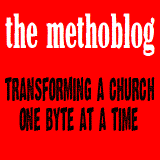How to Worship Like a Methodist, Continued
In the previous post, I wrote about the struggle to create a genuinely Cameroonian Methodist worship service.
But we must remember that this was not a concern at the heart of the original Methodist movement. In the days of Wesley, worship was done well – and done right, according to John! – in the Church of England. Everyone knows that Wesley had no intentions of breaking with the Church of England. He simply wanted to revive the church, help her rediscover her evangelical doctrines. He wanted to kick-start a religion of the heart, which had become simply a religion of the head.
Thus, John never tried to dramatically change the worship practices of his day (this point may be debated by serious Wesley scholars, but for the sake of my argument, I think it is fair). He didn’t write theological treatises on the structure of worship, nor did he have to weigh in on the traditional versus contemporary music debate. No one knows what his opinions on the use of guitars in church are, nor do we know if he cared whether the sermon came before or after the offering.
It just wasn’t in his field of concern.
But, having said that, it is very interesting to note that, when Wesley ordained Dr. Coke to go to America as a superintendent, he sent with him two documents – a copy of his Articles of Faith, and a book of worship, called “The Sunday Service.” This book was a liturgical manual he had put together, which included elements of the Anglican Book of Common Prayer.
Apparently, Wesley felt like the most important thing he could send to the emerging church was not just a statement of belief, but a worship guide.
I don’t mind the fact that we need to be guided in worship. In fact, we need lots of guidance, if truth be told. Otherwise, we would be prone to do what we felt like doing, and then call it “the Spirit” afterwards.
I think Wesley was always concerned about this tendency of his movement to “enthusiasm.” That’s why he tried to ground the revival in Scripture and in the solidity of the tradition of the church.
But I think he would also have been concerned about the tendency of the church to cater to cultural tastes and demands in the name of relevance to that culture. This is such a delicate topic, but one which every serious pastor has to wrestle with.
Thus, the very first question – and most important question -- we have to address is always, “What are we doing in worship?” Is it primarily an evangelistic event, in which the main point is transforming the lives of the gathered people? Or is it a gathering of like-minded believers, in which the main point is fellowship and camaraderie? Is it a school of faith, in which the goal is effectively transmitting information to students?
These are all worthwhile goals, but I think we cannot make any one of them the main point in worship. No, worship has to be centered around God as he is revealed in Christ Jesus. Everything is directed toward properly praising, glorifying, adoring God, and bringing to mind the story of how God has worked and is working in the world to bring the Kingdom closer to reality.
Because of this, worship has an inner logic, a kind of rhythm that makes sense to do one thing, and then another. There are things we must do in worship, and things that we must not do.
I think we took a very big step in defining what this proper worship looks like a few weeks ago. And maybe, by the grace of God, we will avoid the train wrecks that so many other churches have experienced.


